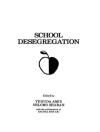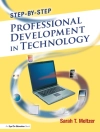Semi-supervised learning is an important area of machine learning. It deals with problems that involve a lot of unlabeled data and very scarce labeled data. The book focuses on some state-of-the-art research on semi-supervised learning. In the first chapter, Weng, Dornaika and Jin introduce a graph construction algorithm named the constrained data self-representative graph construction (CSRGC). In the second chapter, to reduce the graph construction complexity, Zhang et al. use anchors that were a special subset chosen from the original data to construct the full graph, while randomness was injected into graphs to improve the classification accuracy and deal with the high dimensionality issue. In the third chapter, Dornaika et al. introduces a kernel version of the Flexible Manifold Embedding (KFME) algorithm. In the fourth chapter, Zhang et al. present an efficient and robust graph-based transductive classification method known as the minimum tree cut (MTC), for large scale applications. In the fifth chapter, Salazar, Safont and Vergara investigated the performance of semi-supervised learning methods in two-class classification problems with a scarce population of one of the classes. In the sixth chapter, by breaking the sample identically and independently distributed (i.i.d.) assumption, one novel framework called the field support vector machine (F-SVM) with both classification (F-SVC) and regression (F-SVR) purposes is introduced. In the seventh chapter, Gong employs the curriculum learning methodology by investigating the difficulty of classifying every unlabeled example. As a result, an optimized classification sequence was generated during the iterative propagations, and the unlabeled examples are logically classified from simple to difficult. In the eighth chapter, Tang combines semi-supervised learning with geo-tagged photo streams and concept detection to explore situation recognition. This book is suitable for university students (undergraduate or graduate) in computer science, statistics, electrical engineering, or anyone else who would potentially use machine learning algorithms; professors, who research artificial intelligence, pattern recognition, machine learning, data mining and related fields; and engineers, who apply machine learning models into their products.
Guoqiang Zhong
Semi-Supervised Learning: Background, Applications and Future Directions [PDF ebook]
Semi-Supervised Learning: Background, Applications and Future Directions [PDF ebook]
قم بشراء هذا الكتاب الإلكتروني واحصل على كتاب آخر مجانًا!
لغة الإنجليزية ● شكل PDF ● صفحات 239 ● ISBN 9781536135572 ● محرر Guoqiang Zhong ● الناشر Nova Science Publishers, Inc. ● نشرت 2019 ● للتحميل 3 مرات ● دقة EUR ● هوية شخصية 6877677 ● حماية النسخ Adobe DRM
يتطلب قارئ الكتاب الاليكتروني قادرة DRM












